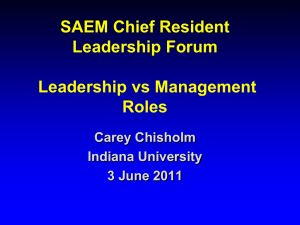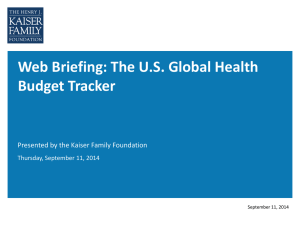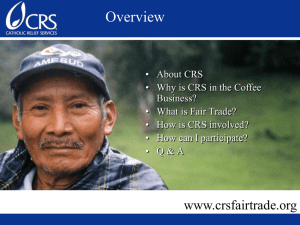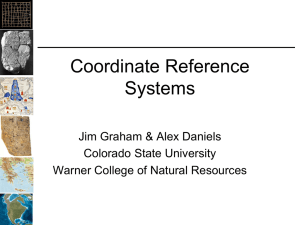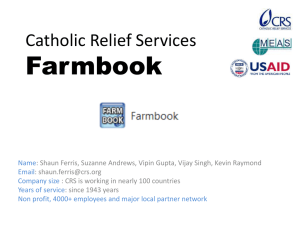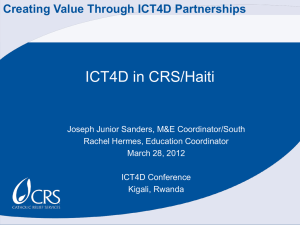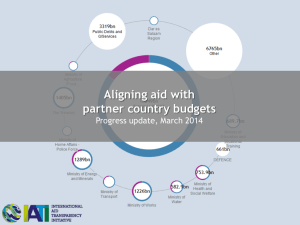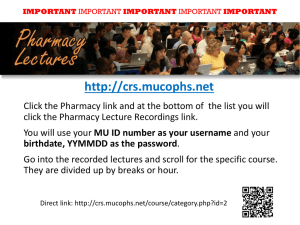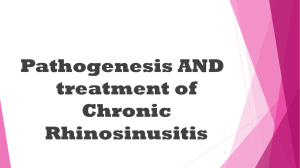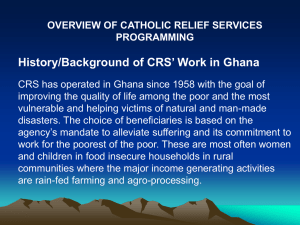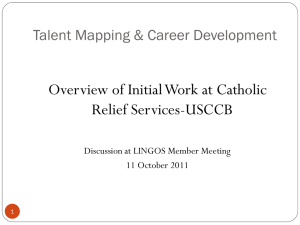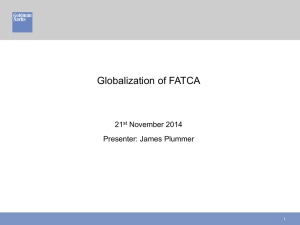Central Referral System Training Presentation
advertisement
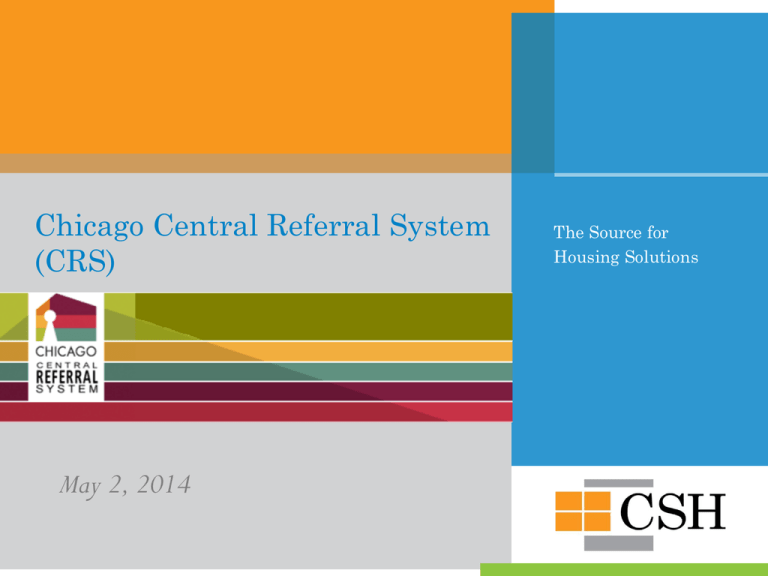
Chicago Central Referral System (CRS) May 2, 2014 The Source for Housing Solutions Agenda 1. 2. 3. 4. 5. 6. 7. Welcome and Introductions Background on CSH and Catholic Charities CRS Overview Outreach Coordination Marketing System Enhancements Questions CSH and Catholic Charities CSH Mission Advancing housing solutions that: Improve lives of vulnerable people Maximize public resources Build strong, healthy communities Catholic Charities – CRS Managing Entity Overview of CRS CRS Purpose Creation of single point of access for Permanent Supportive Housing (PSH) and Permanent Housing with Short Term (PHwSS) Supports to improve efficiency of the current housing system through which individuals and families access housing Federal Strategic Plan: 2010 4 Key Goals: 1. End chronic homelessness by 2015 2. Prevent and end veteran homelessness by 2015 3. Prevent and end homelessness for families, youth and children by 2020 4. Set path to end all types of homelessness by 2020 Coordinated Assessment HEARTH Act: CoC Interim Rule, Section 578.3 “Centralized or coordinated assessment system is defined to mean a centralized or coordinated process designed to coordinate program participant intake, assessment, and provision of referrals. A centralized or coordinated assessment system covers the geographic area, is easily accessed by individuals and families seeking housing or services, is well advertised, and includes a comprehensive and standardized assessment tool.” Plan 2.0: A Home for Everyone 7 Strategic Priorities: 1. Crisis Response System 2. Access to Stable and Affordable Housing 3. Youth Homelessness 4. Employment 5. Advocacy and Civic Engagement 6. Cross –System Integration 7. Capacity Building CRS Task Group Assumptions Lessons learned locally and nationally from 100K Homes Campaign Connect the most vulnerable households with the appropriate housing and services Screen in, not out and remove systematic barriers Outreach is essential Supportive service is critical PSH may not be permanent for everyone Evolutionary process Who is Eligible for CRS? Target Population and Prioritization Target Population: Meet HUD definition of homeless (Category 1 and 4) Income below 60% Area Median Income Households will be prioritized by: Vulnerability Index Score Days homeless Date of application Vulnerability Index – Singles More than 6 months street homeless AND at least one of the following: End Stage Renal Disease History of Cold Weather Injuries Liver Disease or Cirrhosis HIV+/AIDS Over 60 years old 3 or more emergency room visits in prior three months 3 or more ER or hospitalizations in prior year Tri-morbid (mentally ill+ abusing substances+ chronic medical problem) Vulnerability Index - Families Developed in Chicago by CSH in partnership with supportive housing and family outreach providers Identifying and prioritizing families based on: Homelessness history: length of literal homelessness and residential instability Involvement with child protective services Number of children Parental risk factors Child risk factors Essential Elements of CRS Tool: • An on-line application for PSH, • Connected with database that orders people by vulnerability, • Is searchable for PSH agencies, • Is confidential, and • Has ability to connect to or warehouse client documents needed for the housing application and interview process. Administrator: A Managing Entity to manage the database, handle data quality and clean-up, manage conflicts of interest Coordinated Outreach: An approach to the system-management that includes coordination of street outreach teams and staff to personally follow up with applicants to ensure collection of documents needed for housing interview 16 Using CRS Authorized User Agencies There will be three levels of access for the interim-CRS: General Authorized User, Restricted Access Users, and Administrator. Administrator: allows access to all information, delete records, export information, update CHA waiting list status, and generate reports. General Authorized Users (PSH & PHwSS): will run filtered referral reports on all Applicant types except for the HIV/AIDS filter. Restricted Access Users: allows access to filtered searches for people with HIV/AIDS. Timeline For Implementation Timeline for system wide implementation of the CRS: 50% of all scattered-site and site-based supportive housing will pull applicants from the CRS by 12/31/13 100% of all scattered-site and site-based supportive housing will pull applicants form the CRS by 06/30/14 Login Page Each User in Authorized User Agency has own login details Do not share login details with anyone else!! Search Filters As unit(s) become available, Housing Providers can search CRS for Applicants meeting unit requirements based on the following criteria: Median Income Household Composition Gender (Female, Male, Transgender) Age (only sub-category is Youth 18-25) HIV/AIDS Military/Veteran Disabling Condition (presence of, not specific condition) CHA Waiting List (if cross referenced for CHA list, will be marked) Current Zip Code (agencies have the option to specify from a list) Contacting Applicants Housing Providers must notify Applicants of available unit through the following (where available): 1. Applicant: telephone, email or address where they can be found 2. Case worker/outreach worker: telephone, email or agency address 3. Family/friend: telephone or email Outreach Requirements Authorized User Agencies must use the interim-CRS for 30 days (20 business days) Authorized User Agencies are asked to make contact attempts for 10 business days before returning an Applicant back to the interim-CRS. Authorized User Agencies are asked to pull referrals from the interim-CRS up to two “rounds” before going to the site-based list. A minimum of 3 referrals will be generated for each vacant unit. Eligibility Documentation & Program Criteria It is for the housing provider to ensure they have all the correct eligibility documentation from the applicant CRS pre-screens; housing providers are responsible for their own tenant selection criteria and funder requirement compliance Confidentiality Protocols CRS Agency MOU Authorized User Confidentiality Agreement Includes adherence to HIV/AIDS Confidentiality Act and IL Domestic Violence Act HIV/AIDS funded Housing Providers provided access to filter for HIV/AIDS only Domestic Violence not filter criteria Domestic Violence Confidentiality Breach Executive Director reports breaches of confidentiality to the Managing Entity “If I notice or suspect a security breach, I must immediately notify the Executive Director of the Agency and the Managing Entity” “I understand that any violation of this Agreement may also be considered a violation of my employment relationship with this Agency, and could result in disciplinary action, up to and including termination of my employment or affiliation with Agency, as well as potential personal civil and criminal legal fines and penalties.” Outreach Coordination Outreach Coordination Ellen Ryan Outreach Coordinator Center for Housing and Health eryan@housingforhealth.org (312) 784-9099 Marketing CRS System Enhancements Questions Today’s Presenters Lindsey Bishop Gilmore Senior Program Manager, CSH Lindsey.bishop@csh.org Sandra Murray Director – Homeless Prevention Call Center, Catholic Charities slmurray@catholiccharities.net www.ChicagoCRS.org Thank You! CRS Questions: ChicagoCRS@catholiccharities.net The Source for Housing Solutions
